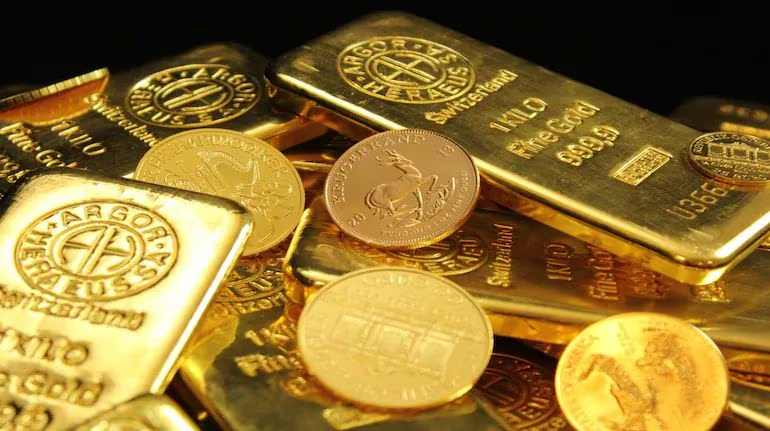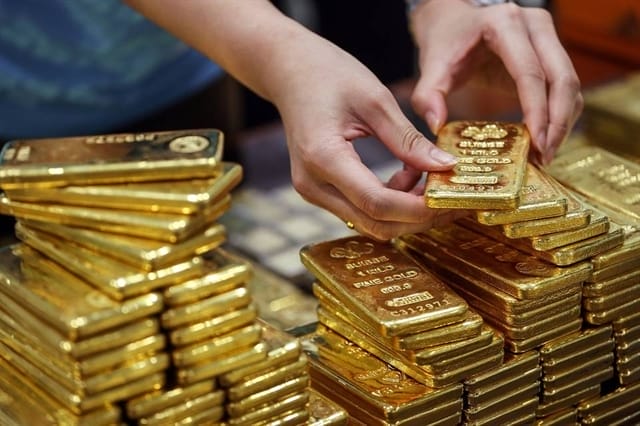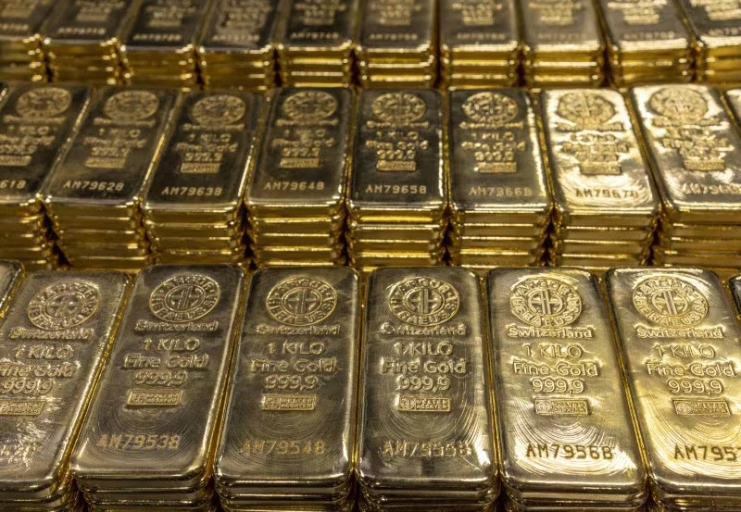Why Investors are Turning to Gold in 2025: The Shifting Dynamics of Risk
Published on 17th January, 2024
As we enter 2025, gold is well on its way to further solidify its position as a key pillar of global investment strategy. Amid growing economic uncertainty, evolving monetary policies, and a heightened focus on sustainability, investors are increasingly viewing gold as more than just a traditional safe haven. The shifting dynamics of risk in 2025, from slower economic growth to persistent inflation, are driving demand for gold as a versatile asset that not only preserves wealth but aligns with modern investment values.
Gold’s Performance in a Slowing Global Economy
Deceleration in Major Economies Spurs Gold Demand
In 2025, global economic growth is facing pronounced headwinds. The United States, Europe, and China, the three economic powerhouses are experiencing significant challenges due to a combination of lingering pandemic aftershocks, geopolitical tensions, and disruptions in supply chains. For instance, China’s GDP growth has been constrained by its ongoing struggles to shift toward a consumer-driven economy, while Europe grapples with energy security issues stemming from prolonged geopolitical conflicts.
With leading economic indicators signaling contraction—such as declining manufacturing output, reduced consumer spending, and falling business investments—fears of a global recession are mounting. Historically, gold has acted as a safe haven during such periods. Its performance during the 2008 financial crisis (when prices surged by over 25%) is being mirrored today. In 2025, gold prices may continue to climb steadily as investors seek refuge from the volatility of equities and other riskier assets.
Wealth Preservation Becomes a Top Priority
Amid these economic uncertainties, wealth preservation is emerging as a critical investment strategy for both retail and institutional investors. Gold’s intrinsic value and resilience to currency fluctuations make it a dependable hedge against market instability. Central bank forecasts of sluggish growth throughout 2025 further reinforce gold’s appeal, as interest in volatile markets wanes. Notably, pension funds and sovereign wealth funds have been reallocating portfolios to include higher percentages of gold-backed securities, underscoring its renewed relevance in long-term wealth management strategies.

Impact of Central Bank Policies of Gold Prices
Monetary Tightening Drives Gold’s Resilience
Central banks’ policies in recent times have been playing a critical role in shaping the trajectory of gold prices. Persistently high inflation has led major institutions, including the U.S. Federal Reserve and the European Central Bank, to adopt aggressive monetary tightening measures, resulting in elevated interest rates. While conventional wisdom suggests that higher interest rates deter gold investment due to its lack of yield, the broader economic context has flipped this narrative.
The ongoing high-rate environment has triggered widespread concerns about economic stagnation and potential deflationary pressures, further fueling gold’s appeal. Investors are drawn to its historical resilience during prolonged periods of financial instability. Meanwhile, fears of a liquidity crunch have prompted major financial institutions to hedge risks by increasing gold allocations.
Record Central Bank Gold Purchases in 2024
Central banks worldwide have been ramping up their gold reserves in response to declining confidence in fiat currencies. According to a recent World Gold Council report, the broad sustained interest in gold from central banks in 2024 has clearly highlighted the metal’s enduring appeal. Nations like China and India are diversifying away from the US dollar and euro, citing the geopolitical volatility and mounting trade imbalances impacting fiat currency valuations.
Geopolitical tensions have also spurred a reevaluation of reserve strategies. As nations seek to insulate themselves from the ripple effects of economic sanctions or trade wars, gold’s neutrality and universal acceptability have made it a cornerstone of sovereign reserve portfolios. This trend reflects a broader pivot towards assets that safeguard against the unpredictability of international monetary systems.

Inflation and Currency Weakness in 2025
Inflation Persists Despite Monetary Tightening
The inflationary surge of the early 2020s remains stubbornly persistent in 2025. Factors such as prolonged supply chain disruptions, elevated energy costs, and geopolitical uncertainties have continued to drive up prices across global markets. Despite central banks’ aggressive rate hikes, inflation rates in key economies remain well above target levels.
Gold’s traditional role as a hedge against inflation is proving invaluable in this environment. Unlike fiat currencies that lose purchasing power during inflationary periods, gold retains its value and even appreciates. This has prompted a surge in demand from investors seeking to preserve the real value of their wealth, with gold-backed exchange-traded funds (ETFs) witnessing record inflows.
Currency Weakness Accelerates Emerging Market Gold Purchases
Emerging markets are particularly vulnerable to currency devaluation, a trend that may intensify in 2025. Countries like India, Turkey, Argentina, and South Africa have experienced sharp declines in the value of their local currencies against the US dollar. As a result, gold has become an essential store of value for governments, businesses, and individual investors in these regions.
Gold’s inverse relationship with the US dollar has provided additional tailwinds for its price. The dollar’s weakening—driven by geopolitical realignments, escalating US debt levels, and shifts in global trade patterns—has enhanced gold’s attractiveness as a stable and reliable asset. Investors worldwide are increasingly turning to gold to mitigate exposure to currency risks and protect their purchasing power.
Rising Focus on Sustainability in Gold Investments
ESG Factors Redefine Gold’s Role in Portfolios
In recent years, sustainability has become a central theme in investment decision-making. The gold industry is undergoing a profound transformation to align with this trend. Environmental, Social, and Governance (ESG) considerations are driving demand for responsibly sourced gold, with institutional investors leading the charge. Mining companies are under pressure to adopt sustainable practices, including minimizing carbon emissions, reducing water consumption, and improving waste management.
Initiatives such as the “Green Gold” certification, which guarantees ethical and environmentally friendly sourcing, have gained traction among ESG-focused portfolios. Innovations in mining technology such as renewable energy-powered operations and eco-friendly extraction techniques, are making gold more appealing to sustainability-conscious investors. These advancements not only enhance gold’s ethical profile but also address concerns about the environmental footprint of traditional mining methods.
Blockchain Boosts Transparency in Gold Supply Chains
Blockchain technology is playing an important role in reshaping the gold market by enhancing transparency and traceability in supply chains. By enabling investors to verify the origin of their gold, blockchain ensures adherence to ethical and sustainable sourcing standards.
This technological innovation is particularly appealing to millennial and Gen Z investors, who prioritize accountability and transparency in their investment choices. As a result, gold is shedding its reputation as a purely traditional asset and is being embraced by a younger demographic of investors seeking both financial returns and alignment with their values.

Inflation Expectations in the Post-Election Environment and How It Can Impact Gold Prices
The inflationary environment in the US remains a concern and consumer prices continue to experience upward pressure, with the Federal Reserve facing persistent challenges in achieving its long-term target of 2% inflation rate. Currently, inflation has moderated from its peaks, but remains elevated due to global supply chain pressures, over spending, and geopolitical tensions.
With Donald Trump re-elected as president, market analysts expect several of his proposed policies, including the continuation of tax cuts, increased tariffs, and deregulation, to play a pivotal role in shaping economic conditions. Proposals for significant tariffs, particularly on Chinese imports, are anticipated to push inflation higher by increasing costs for consumers and businesses.
For example, some forecasts suggest tariffs could add approximately 2.5 percentage points to inflation in the short term but with oil drilling to increase and lower gas prices, economic growth should materialize. As a result, gold, which is historically seen as a hedge against inflation, could experience increased demand, which can drive up its price. Remember, Trump has already been president and inflation was at a minimum.
Growing Geopolitical Tensions May Lead to an Increased Demand for Gold
Geopolitical instability is one of the most significant drivers of demand for gold as a safe haven asset. The ongoing war in Ukraine and tensions in the Middle East have made gold an appealing choice for investors looking to safeguard their portfolios amidst geopolitical uncertainty and economic volatility.
With increasing concerns about potential escalations in these conflicts, including the risk of broader NATO involvement in Ukraine and the possibility of a multi-front war in the Middle East, the demand for gold is expected to remain high in the short term.

Gold Price Forecast for 2025
Gold is on track to exceed earlier price predictions, with Goldman Sachs forecasting it could reach $3,000 per ounce by the end of 2025. This bullish outlook stems from a combination of central bank purchases, geopolitical risks, and shifting investor sentiment.
Traditionally, gold prices move inversely to interest rates, as the precious metal offers no yield. Based on this, since 2022, an unprecedented surge in gold buying by central banks has shifted this dynamic, setting new price benchmarks. Goldman Sachs estimates that every additional 100 tons of physical demand increases gold prices by at least 2.4%. Emerging market central banks, spurred by concerns over financial sanctions and reserve diversification, have significantly increased their gold holdings since the freezing of Russian assets following the Ukraine invasion.
The report also highlights growing concerns among policymakers about the sustainability of US debt ($36 trillion, which is 125% of the nation’s GDP). With many central banks holding substantial US Treasury bonds, exposure to fiscal risks has prompted a pivot toward gold. Western investors are also revisiting gold as a hedge against potential geopolitical shocks, trade tensions, and economic uncertainties tied to the upcoming US presidential election.
This multifaceted demand suggests a strong upward trajectory for gold prices, solidifying its appeal as a resilient and strategic investment.

Invest in Gold with J. Rotbart & Co Today!
When it comes to investing in gold, trust matters. J. Rotbart & Co. is a family-owned boutique firm specializing in physical precious metals, offering unparalleled expertise and a personalized approach. Whether you want to buy, sell, or store gold, our global network and seasoned professionals can provide expert advice and provide secure, discreet, and efficient service.
With decades of experience in trading, logistics, and precious metals management, we can provide personalized solutions that meet your unique needs and goals. We can guide you through every aspect of your gold investment journey.
Contact us today using our online contact form or email us at [email protected] to find out how we can help you with your gold investment needs.













